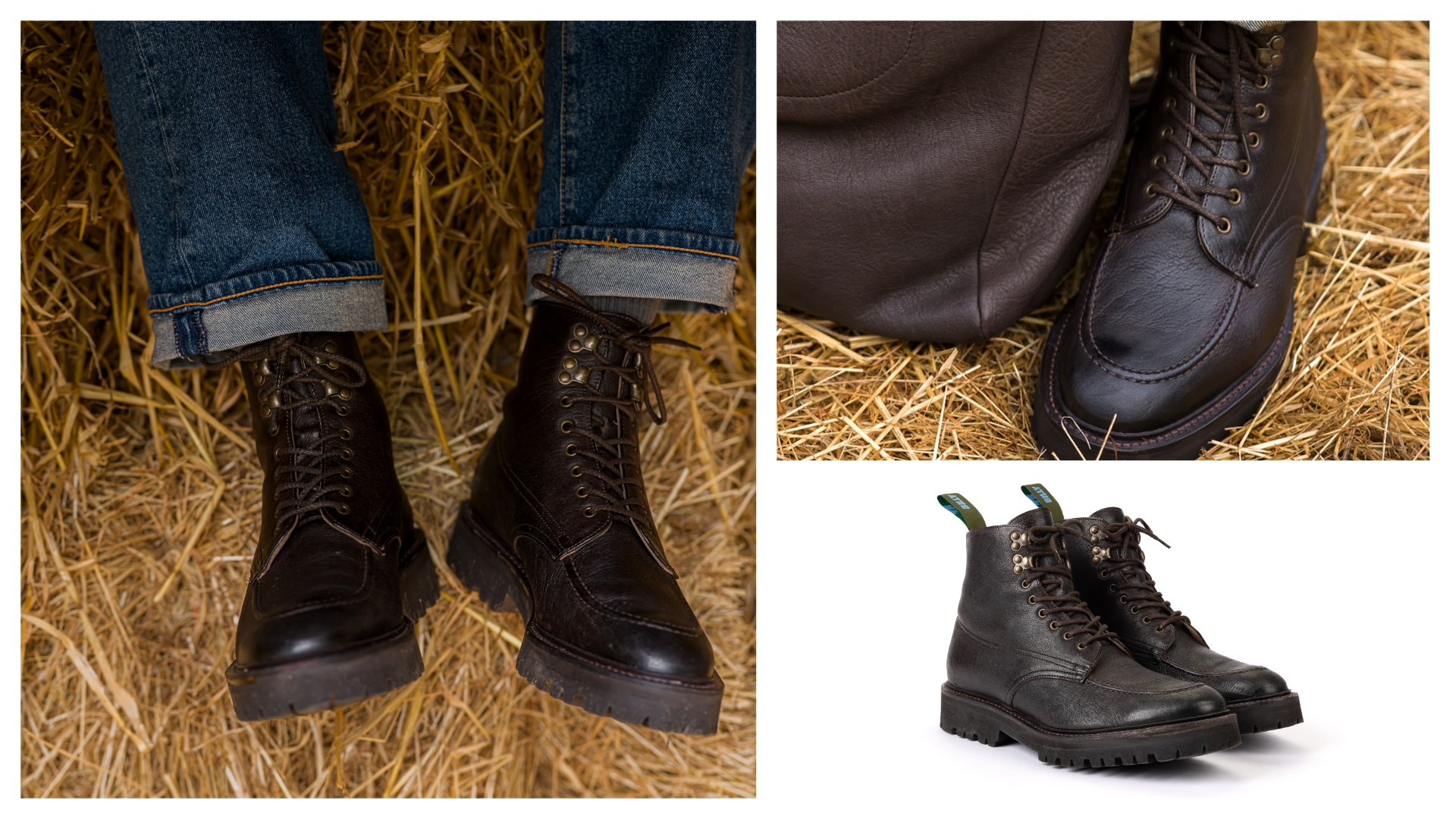
More than two years after we first heard about Steven Avery’s trial and subsequent conviction for the murder of Teresa Halbach, we’re getting a significant update.
Making a Murderer is back for a second season on Netflix, where the documentary filmmakers behind the original series Laura Ricciardi and Moira Demos will continue to examine the case and the fallout that ensued after its runaway success.
Avery was sentenced to life without parole in 2007 for the alleged murder of Halbach, a photojournalist who was last seen alive on his property in Wisconsin. Also implicated in the murder is his nephew Brendan Dassey who is now serving life in prison with eligibility for parole in 2048 for his alleged role in the murder.
The original series made headlines due to the various contradictions and questions that appear to have been left unanswered by the initial investigations and subsequent convictions of Avery and Dassey - both of whom maintain their innocence.
Sparking a revival of the true crime genre, fans of the show have spent the last several years conducting their own amateur sleuthing (some to greater success than others), while Avery’s new lawyer Kathleen Zellner has also raised plenty of new issues herself, leaving plenty of the latest season to work with.
Here are just a few of the things we’d like to see Ricciardi and Demos cover in season two, which comes to Netflix on 19 October.
You may also like
Get exclusive shortlists, celebrity interviews and the best deals on the products you care about, straight to your inbox.

12 unbelievable updates to the Making a Murderer case that you need to know about
1. Do cell tower pings prove Teresa Halbach left the Avery property alive?
Loyal viewers of the first season will be familiar with the concept of cell tower pings, even more so if they also listened to true crime podcast Serial before giving Making a Murderer a go. For the uninitiated, ‘cell tower pings’ refers to when mobile phone reception towers can be used to place a person’s phone at a certain location or (and this is sometimes more important) show they could not have been at a certain location at a certain time.
According to Steven Avery’s new lawyer Kathleen Zellner, the original trial lawyers failed to present cell tower evidence which may have at the very least presented reasonable doubt for the jury.
In a Newsweek piece, Zellner says: “It’s absolutely shocking to see cellphone records that were part of the discovery that were turned over to the defense…document her route leaving the property. She goes back the same way she came, she’s 12 miles from the property on the last ping.”
Dean Strang, one of Avery’s original lawyers (and an unlikely ‘star’ of Making a Murderer’s first season) said “That [Zellner] is criticizing some aspects of the work I did at trial means that she is doing her job”. Will we see this addressed in greater depth in season two? We hope so because it’s certainly confusing.
2. Why was juror Richard Mahler excused?

Steven Avery received his prison sentence after being found guilty by a jury of his peers, but the makeup of that jury changed mid-trial when one juror, Richard Mahler, was excused and replaced. However, little information about his departure has been made public.
What’s more puzzling to Steven Avery’s defenders is that Mahler seemed convinced of Avery’s innocence, or at the very least seems convinced of it now, telling Yahoo News “According to the evidence that I reviewed in the court room the six weeks I was there, it didn’t all add up.”
The official line at the time was that Mahler gave up his position on the jury following a family emergency related to his stepdaughter being involved in an accident, but the ex-juror suggests comments made by one of his fellow jurors also played a part.
With Mahler demonstrating a willingness to speak to the media since the first season aired, will we hear more from him in season two and finally get to the bottom of the mystery?
3. Did Teresa Halbach’s ex-boyfriend Ryan Hillegas give false testimony?

During the first season of Making a Murderer, we were introduced to Ryan Hillegas, Teresa Halbach’s ex-boyfriend, and his role in the alleged deletion of Halbach’s voicemails after she went missing.
According to Hillegas’ testimony, he “figured out” his ex-girlfriend’s password and this allowed him to access her voicemails, but maintains he did not delete any voicemails. However, Halbach’s voicemail was found to be full at some point after her disappearance and then not full at a later date.
Was Hillegas lying when he said he didn’t delete any voicemails? Or was Mike Halbach, Teresa’s brother, bending the truth when he said he didn’t delete any? Did Hillegas guess the password, as he claims? How easy is it to guess a password anyway? Is there any way of recovering details about the supposed deleted messages after the fact, or is that avenue closed?
Kathleen Zellner has named him as a potential alternate suspect – someone she argues should have been investigated more closely at the very least – and it would make sense for the filmmakers to address this loose thread in the new episodes.
4. Should Bobby Dassey have been looked at more closely as a suspect?

When introducing two potential alternate suspects, Zellner named both Hillegas and Bobby Dassey, Steven Avery’s relative and the brother of his fellow defendant Brendan Dassey. While we’ve already been over the potential unanswered questions relating to the former, there have been new discoveries relating to Bobby which have come to light since season one aired.
As Rolling Stone reported in 2017, a significant element surrounds the contents of the Dassey family computer, namely photos of Halbach and what has been described as “many images of violent pornography involving young females being raped and tortured”. How is this relevant to Bobby Dassey? Well, according to reports, the times at which certain material was downloaded rules out Brendan Dassey due to his school schedule.
Bobby Dassey’s alibi for the murder was provided by his now-stepfather Scott Tadych, and Tadych’s alibi was provided by Bobby Dassey (the pair claim to have passed one another on the highway).
Could these new allegations have prompted Ricciardi and Demos to revisit the alibi narrative around the pair?
5. Why did Sheriff Colborn call in Halbach licence plates two days early, and why didn’t he use his radio?
One of the main talking points in the first season surrounded Sheriff Andrew Colborn, and how he was in a position to call in Halbach’s licence plate number before her vehicle was ‘officially’ located. There have been plenty of theories about the time discrepancy, and those who suggest foul play on the part of the police have pointed to this as potential supporting evidence.
However, there’s a new theory which has been doing the rounds: could it be possible that Ryan Hillegas and Mike Halbach did an investigation of their own which led them to stumble upon the car and alert the sheriff to its location before it was officially ‘found’? Colborn being on foot would explain him calling in the discovery rather than radioing, and would explain why he knew the model of car before others.
The theory continues: “Andrew Colborn is now operating outside of police protocol at a potential crime scene that he has no official directive to be at. He tells Mike Halbach and Ryan Hillegas to basically STFU about what they found and not mention to anyone that they were ever on the Avery Salvage property that night. Ryan or Mike turns the RAV4 key over to Andrew Colborn.”
The early reporting of the car received plenty of attention in the original run of the show, so it’s possible Ricciardi and Demos be tempted to follow up on new theories when the show returns.

6. Why wasn’t Halbach reported missing by her roommate?

Teresa Halbach was, according to reports seen since the first season of Making a Murderer, in a sexual relationship with her new roommate Scott Bloedorn. Indeed, according to a post-conviction investigator, Bloedorn also named Hillegas as a potential suspect in conversations with her. However, there are also unanswered questions over the roommate himself.
Bloedorn barely appears at all in the first season of Making a Murderer, but reddit investigators have asked why he did not report Halbach missing – a valid query, or so it would seem. It’s entirely possible the he didn’t think not seeing her for a few days was any cause for concern, and this may indeed be valid, but the first season of the show went into very minimal detail about his movements, not even taking steps to rule him out.
Could the second season go into greater depth about Bloedorn, even if it’s to explain why the filmmakers didn’t deem him worthy of more attention. The failure to report Halbach as a missing person might not necessarily be a smoking gun, but it certainly feels like there’s value in raising it as a talking point.
7. Could Teresa Halbach actually be still alive?
Yes, we know there was a death certificate produced and bones said to belong to Halbach were found on the Avery property, but that hasn’t stopped a line of argument – led by Steven Avery’s mother Dolores – that not only was the photojournalist not killed by Avery, but she wasn’t killed at all.
Dolores Avery has claimed Halbach may have cooperated with the police to frame Avery, though she provides nothing in the way of supporting evidence. Still, while it should be easy to put this theory to bed, there are other issues people have identified with the death certificate.
Perhaps most worryingly, as the Huffington Post notes, “The box indicating an autopsy had been carried out was ticked even though the date and time on the form say it was filled in before Halbach’s remains were found”.
So, certainly unanswered questions there even if the main one seems pretty far-fetched.
You may also like
- Either the ‘Avengers 4’ title & trailer details just got leaked or someone has waaay too much time on their hands
- No pain, no gain? Experts debunk the biggest fitness myths
- Fireballs and exploding oceans: What happens if it keeps getting hotter?
- A pathologist, obituary writer and funeral director tell us what death can teach us about life
Most emails are rubbish, ours isn't
Get exclusive shortlists, celebrity interviews and the best deals on the products you care about, straight to your inbox.
(Images: Netflix)

